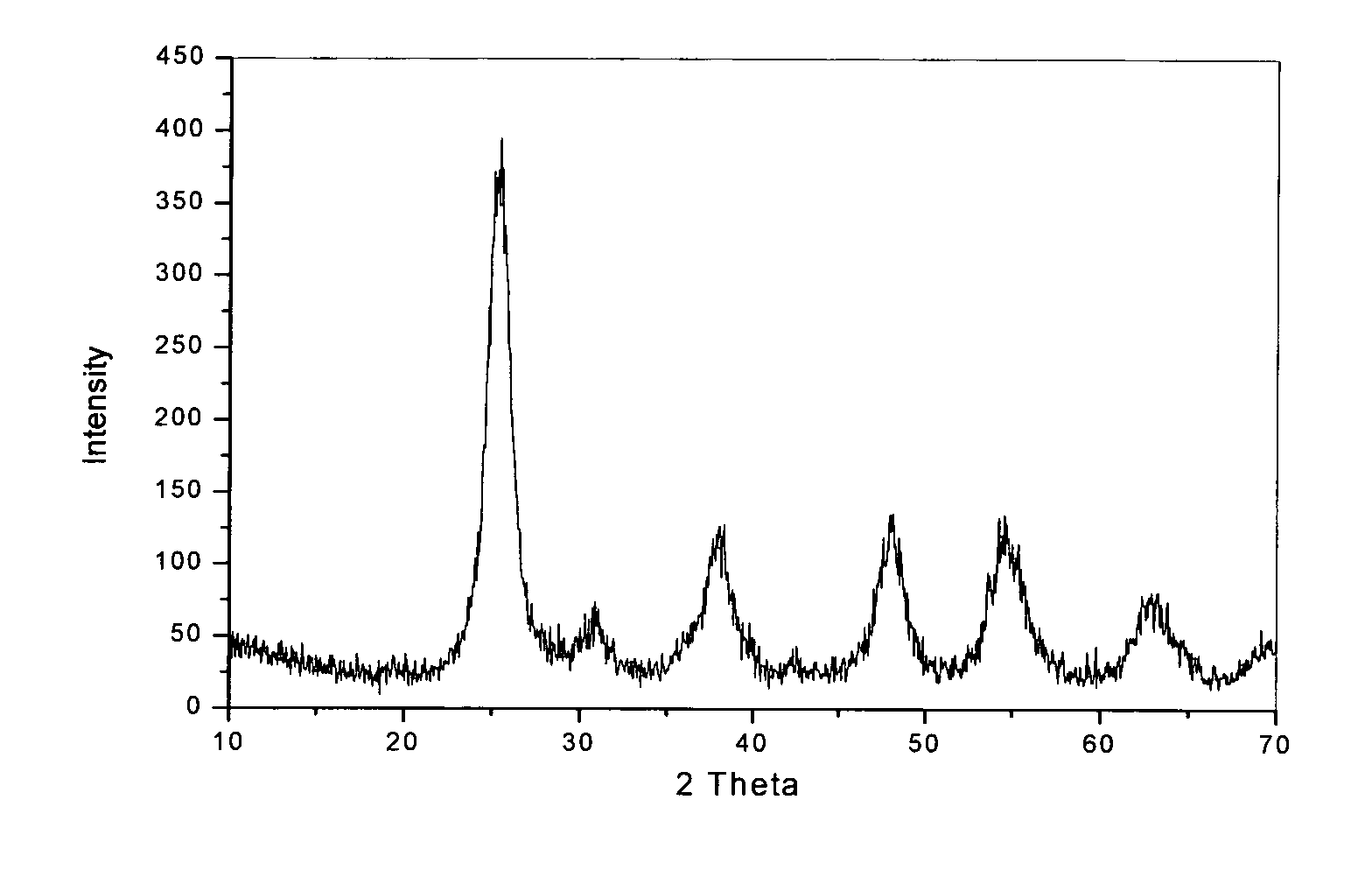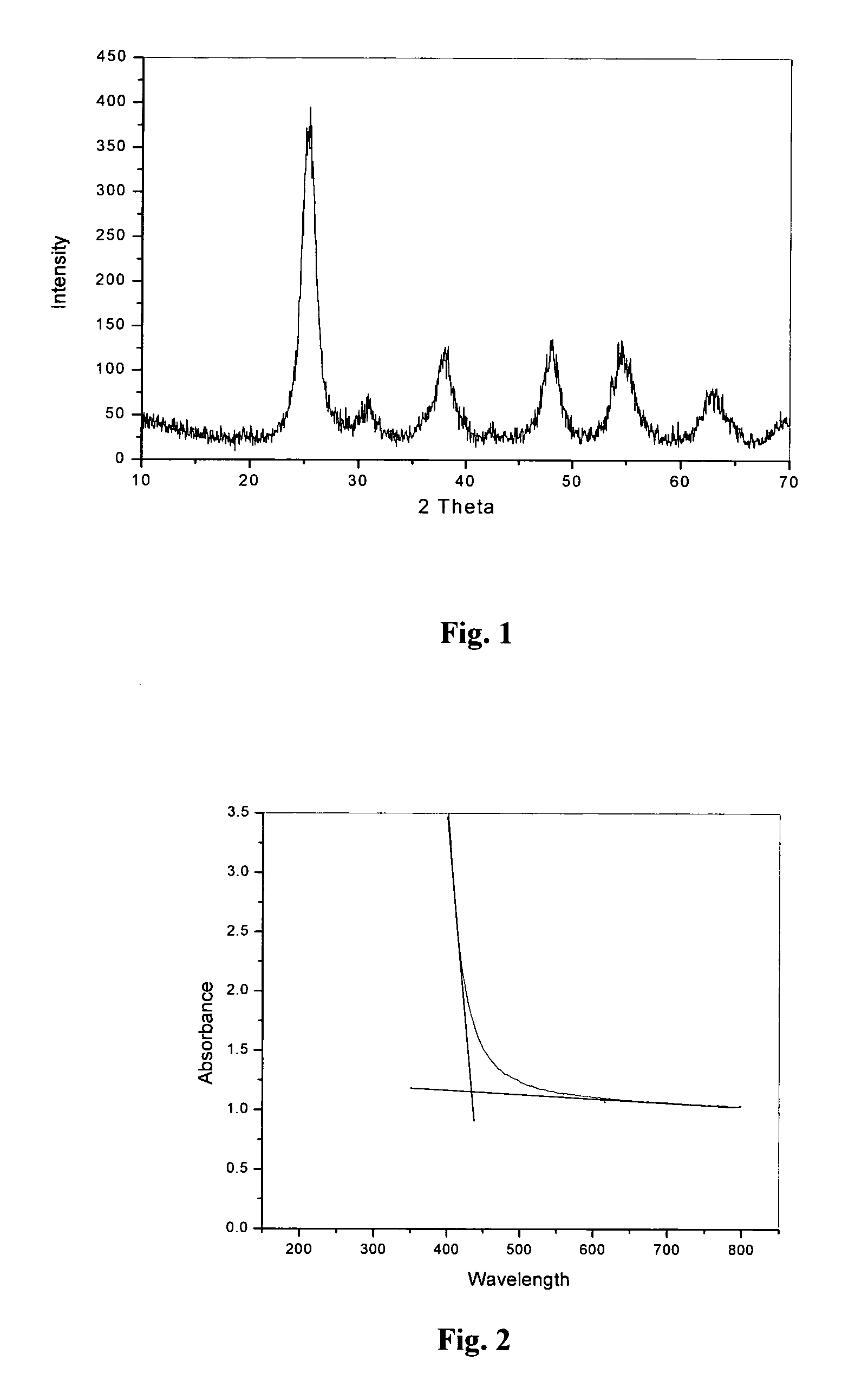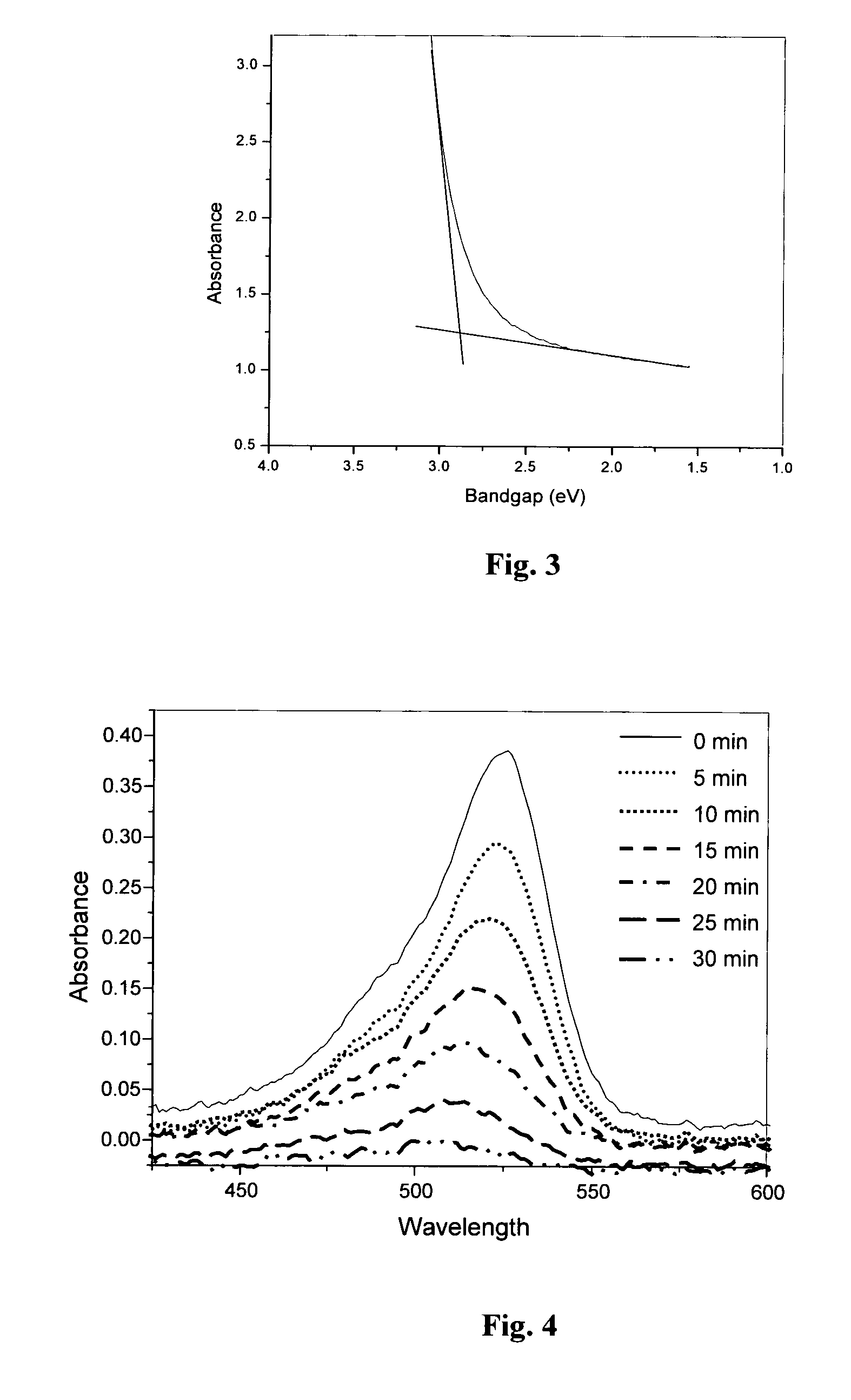Visible light activatable photocatalyst
a photocatalyst and visible light technology, applied in the field of photocatalysts, can solve the problems of unsuitable ultraviolet light activation photocatalysts, and achieve the effects of low cost energy efficiency, reduced band gap of crystalline materials, and reduced band gap energy of nanoporous crystalline materials produced by this method
- Summary
- Abstract
- Description
- Claims
- Application Information
AI Technical Summary
Benefits of technology
Problems solved by technology
Method used
Image
Examples
example 1
Microwave Assisted (Low Temperature) Synthesis of Nanocrystalline TiO2
Experimental
[0098]7.5 ml of titanium (IV) isopropoxide was added to 75 ml boiling water with constant stirring (volume ratio between TTIP and water was fixed as 1:10 in all preparations). Precipitated hydrated titanium oxide were stirred for 30 minutes, and treated with microwave radiations of power 300 W for 60 minutes. It was then filtered, dried in an oven at 80° C. to form a powder. An X-ray diffraction pattern of the powder is given in FIG. 1.
X-Ray Diffraction Studies
[0099]High intensity broad peaks in the X-ray diffraction pattern indicate the formation of nanocrystalline anatase titania. The average crystallite size D was 6.1 nm determined according to the Scherrer equation D=Kλ / β cos θ where k is a constant (shape factor, about 0.9); 1 is the X-ray wavelength; β is the full width at half-maximum of the diffraction line and θ is the diffraction angle. The values of β and θ are from the anatase (1 0 1) diff...
example 2
Microwave Assisted Synthesis of Phosphoric Acid Modified Titania
[0102]Phosphoric acid modified nanocrystalline titania powder was prepared by a microwave assisted method in an open container using a very low power (300 W) for 60 min. Molar ratios between titanium isopropoxide and phosphoric acid used were 1:0 (undoped / control), 1:0.05, 1:0.1, 1:0.15, 1:0.2, and 1:0.25.
Experimental
[0103]7.5 ml of titanium (IV) isopropoxide was added to 75 ml boiling water containing phosphoric acid with constant stirring. Precipitated hydrated titanium oxide were stirred for 30 minutes, and treated with microwave radiations of power 300 W for 60 minutes. It was then washed, dried in an oven at 80° C. and powdered well. X-ray diffraction pattern was then taken of the powder. This was repeated with the respective ratios of titanium isopropoxide:phosphoric acid as set above. The respective UV spectra of the powders are set out in FIG. 5. The top trace in FIG. 5 represents an undoped control. Each succes...
example 3
Microwave Assisted Synthesis of Iron Doped Titania
[0107]Iron doped nanocrystalline titania powder was prepared by a microwave assisted method in an open vessel (100 ml glass beaker) using a very low power (300 W) for 60 min. Molar ratios between titanium isopropoxide and iron precursor used were 1:0, 1:0.005, 1:0.01, 1:0.025, 1:0.05, 1:0.1 and 1:0.5.
Experimental
[0108]7.5 ml of titanium (IV) isopropoxide was added to 75 ml boiling water containing different amounts of ferric chloride (as iron source) with constant stirring. Precipitated hydrated titanium oxide was stirred for 30 minutes, and treated with microwave radiations of power 300 W for 60 minutes. These materials were then washed, dried in an oven at 80° C. and powdered well. X-ray diffraction pattern of the powders are given in FIG. 11. The top trace in FIG. 11 represents an undoped control. Each successive trace (moving from top to bottom) represents respectively the spectrum for the 1:0.005, 1:0.01, 1:0.025, 1:0.05, 1:0.1 ...
PUM
| Property | Measurement | Unit |
|---|---|---|
| band gap | aaaaa | aaaaa |
| crystallite size | aaaaa | aaaaa |
| crystalline size | aaaaa | aaaaa |
Abstract
Description
Claims
Application Information
 Login to View More
Login to View More - R&D
- Intellectual Property
- Life Sciences
- Materials
- Tech Scout
- Unparalleled Data Quality
- Higher Quality Content
- 60% Fewer Hallucinations
Browse by: Latest US Patents, China's latest patents, Technical Efficacy Thesaurus, Application Domain, Technology Topic, Popular Technical Reports.
© 2025 PatSnap. All rights reserved.Legal|Privacy policy|Modern Slavery Act Transparency Statement|Sitemap|About US| Contact US: help@patsnap.com



